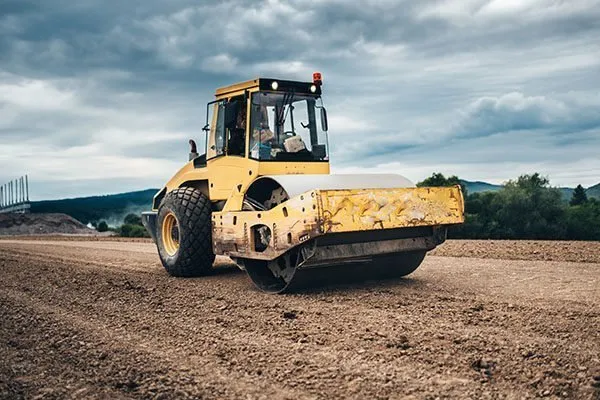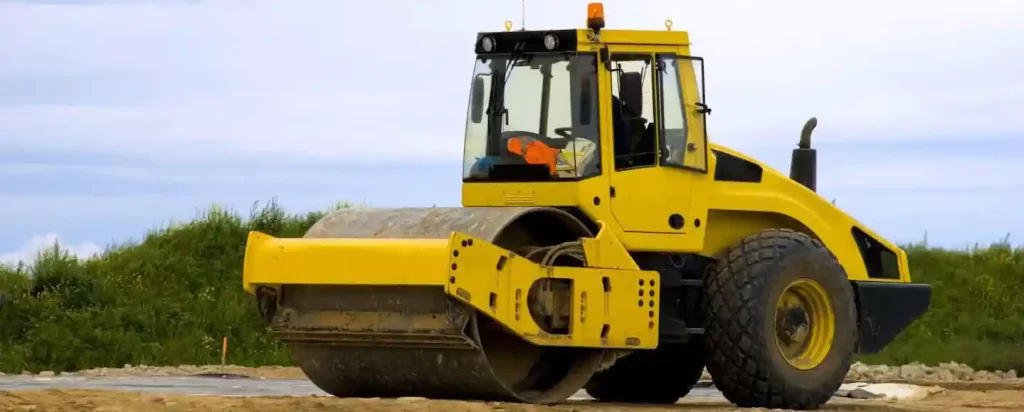Soil compaction poses a significant challenge to agricultural productivity and ecosystem health, hindering root growth, water infiltration, and nutrient uptake. Harley raking, a technique employing specialized machinery, offers a solution by loosening and leveling compacted soil surfaces. This process breaks up soil compaction layers, enhancing soil structure and promoting better aeration and drainage. Through controlled manipulation of the soil surface, Harley raking mitigates compaction without disturbing underlying soil profiles, preserving soil integrity and promoting healthier plant growth. In this brief, we explore the principles and benefits of Harley raking techniques in addressing soil compaction, crucial for sustainable land management practices.
Introduction to Soil Compaction:
Soil compaction is a prevalent issue that significantly impacts agricultural productivity and ecosystem health worldwide. It occurs when soil particles are pressed tightly together, reducing pore spaces and impeding the movement of air, water, and nutrients within the soil. Compaction often results from heavy machinery operations, livestock trampling, or natural processes, such as heavy rainfall or freeze-thaw cycles. This compression restricts root growth, inhibits water infiltration, and diminishes soil fertility, leading to reduced crop yields and degraded land quality. Addressing soil compaction is crucial for maintaining sustainable agriculture practices and preserving soil health. Effective techniques like Harley raking offer a solution by loosening compacted soil surfaces without disturbing the underlying soil profile, thereby promoting improved soil structure and better plant growth. In this context, understanding the mechanisms and benefits of Harley raking becomes imperative for mitigating the detrimental effects of soil compaction and ensuring the long-term viability of agricultural landscapes.
Understanding Harley Raking:
Implementing Harley raking in Tilton’s parks and public spaces offers a specialized technique to address soil compaction and promote healthier soil conditions. Harley raking involves the use of a Harley rake attachment, typically mounted on tractors or skid-steer loaders, equipped with rows of closely spaced tines or teeth. These tines penetrate the soil surface, effectively loosening and leveling compacted areas without causing significant disruption to the underlying soil structure. By gently combing through the top layers of soil, Harley raking breaks up compaction layers, enhancing soil aeration, water infiltration, and nutrient distribution. Unlike traditional methods that may disturb the soil profile, Harley raking allows for targeted treatment of compacted areas while minimizing disruption to the surrounding environment. This precision and effectiveness make Harley raking a valuable tool for promoting soil health and improving the quality of Tilton’s parks and public spaces in a sustainable manner

Mechanism of Action:
Improving water drainage with Harley raking involves a precision-driven approach to addressing soil compaction while safeguarding soil integrity. When the Harley rake attachment is engaged, the closely spaced tines or teeth penetrate the soil surface, breaking up compacted layers without disturbing the underlying soil profile. As the machinery moves forward, the tines effectively loosen the soil, allowing air, water, and nutrients to penetrate deeper into the ground. Simultaneously, the rake gathers and redistributes surface debris, leveling the terrain and promoting uniformity. This process enhances soil structure by creating a more porous and friable soil matrix, facilitating better root penetration, water infiltration, and nutrient absorption. By selectively targeting compacted areas and minimizing disruption to the surrounding soil, Harley raking ensures efficient compaction relief while promoting sustainable land management practices.
Breaking Compaction Layers:
- Penetration: Harley rake’s closely spaced tines or teeth penetrate the soil surface.
- Loosening: Tines break up compacted soil layers without disturbing the underlying soil profile.
- Disruption: Compaction layers are broken apart, allowing for improved soil structure.
- Aeration: Increased pore space enhances soil aeration, vital for root growth and microbial activity.
- Water Infiltration: Loosened soil allows water to penetrate deeper into the ground, reducing runoff and erosion.
- Nutrient Absorption: Enhanced soil structure facilitates better nutrient uptake by plant roots.
- Promotes Root Growth: Breakage of compaction layers encourages deeper root penetration, promoting healthier plants.
- Overall Improvement: Breaking compaction layers enhances soil fertility, drainage, and resilience to environmental stressors.
Promoting Soil Structure:
Promoting soil structure through Harley raking involves enhancing the physical arrangement of soil particles to create a more conducive environment for plant growth and soil health. By breaking up compacted layers and increasing pore spaces within the soil, Harley raking improves soil aeration, allowing oxygen to reach plant roots and facilitating microbial activity essential for nutrient cycling. This enhanced aeration also reduces the risk of anaerobic conditions that can inhibit root growth and promote disease. Additionally, the process of Harley raking helps to redistribute organic matter and soil aggregates, promoting better soil aggregation and stability. As a result, soil becomes more resistant to erosion and compaction, while also retaining moisture more effectively. Ultimately, promoting soil structure through Harley raking fosters a healthier soil ecosystem, supporting robust plant growth, improved water management, and long-term sustainability in agricultural and land management practices.

Preservation of Soil Integrity:
Harley raking for Tilton construction sites prioritizes the preservation of soil integrity while effectively addressing soil compaction. Unlike some traditional methods that may disturb the soil profile, Harley raking minimizes disruption while efficiently relieving compaction. This precision ensures that the underlying soil structure remains largely intact, preserving its natural composition and biological activity. By targeting only the surface layers where compaction is prevalent, Harley raking avoids unnecessary disturbance to deeper soil horizons, minimizing the risk of erosion and nutrient loss. This approach safeguards the soil’s physical, chemical, and biological properties, maintaining its fertility and resilience over time. Furthermore, by preserving soil integrity, Harley raking supports the conservation of soil biodiversity and ecosystem function, contributing to sustainable land management practices and the long-term health of agricultural landscapes.
Benefits for Sustainable Land Management:
Harley raking offers several benefits for sustainable land management practices, making it a valuable tool in maintaining soil health and productivity. By effectively addressing soil compaction without compromising soil integrity, Harley raking promotes better water infiltration, reduces erosion, and enhances nutrient availability, thus improving overall soil fertility. This not only boosts agricultural productivity but also contributes to the conservation of natural resources and biodiversity. Additionally, the targeted nature of Harley raking minimizes soil disturbance, preserving soil structure and reducing the carbon footprint associated with tillage operations. As a result, Harley raking supports sustainable land management by promoting healthier soils, increased crop resilience, and the preservation of ecosystems. Its ability to improve soil conditions while minimizing environmental impact makes Harley raking an essential practice for sustainable agriculture and land stewardship in the face of increasing challenges posed by climate change and land degradation.

Application and Considerations:
- Soil Type: Consider the soil type and its susceptibility to compaction, as some soils may require more frequent or intensive Harley raking treatments.
- Moisture Levels: Assess soil moisture levels, as Harley raking is typically more effective on slightly moist soil rather than extremely dry or saturated conditions.
- Crop Rotation: Incorporate Harley raking into crop rotation schedules to target compacted areas efficiently while minimizing disruption to growing crops.
- Timing: Choose appropriate timing for Harley raking based on crop growth stages, weather conditions, and soil moisture levels to maximize effectiveness and minimize compaction risk.
- Equipment Selection: Ensure proper selection and maintenance of Harley rake attachments and machinery to achieve desired results without causing unnecessary soil disturbance.
- Depth and Frequency: Determine the optimal depth and frequency of Harley raking based on the severity of compaction, soil conditions, and land management goals.
- Environmental Considerations: Take into account potential environmental impacts of Harley raking, such as soil erosion, runoff, and habitat disturbance, and implement mitigation measures as needed.
- Monitoring and Evaluation: Regularly monitor soil conditions and crop performance after Harley raking treatments to assess effectiveness and make adjustments as necessary for long-term soil health and productivity.
FAQ’s:
How do you address soil compaction?
Address soil compaction through techniques like deep tillage, subsoiling, or Harley raking to break up compacted layers and improve soil structure.
What is compaction in soil improvement techniques?
Compaction in soil improvement techniques refers to the compression of soil particles, reducing pore spaces and hindering water infiltration, root growth, and nutrient absorption.
Which is special technique of compaction?
Harley raking is a specialized technique used to address soil compaction by loosening and leveling compacted soil surfaces without disturbing the underlying soil profile.
What are the four equipment methods for field compaction of soil?
The four equipment methods for field compaction of soil are rollers, vibratory compactors, sheepsfoot rollers, and pneumatic-tired rollers.
What are the 2 methods of compaction test?
The two methods of compaction test are the Standard Proctor Test (ASTM D698) and the Modified Proctor Test (ASTM D1557).
CONCLUSION:
In conclusion, Harley raking stands as a crucial technique for addressing soil compaction while promoting sustainable land management practices. By delicately loosening compacted soil surfaces without disrupting the underlying soil profile, Harley raking enhances soil structure, improves aeration, water infiltration, and nutrient distribution. Its targeted approach minimizes environmental disturbance while maximizing the benefits for crop growth and soil health. As we navigate the challenges of modern agriculture and strive for long-term sustainability, integrating Harley raking into soil management strategies emerges as a key solution for maintaining healthy soils, preserving ecosystem integrity, and ensuring the productivity of agricultural lands for generations to come.

